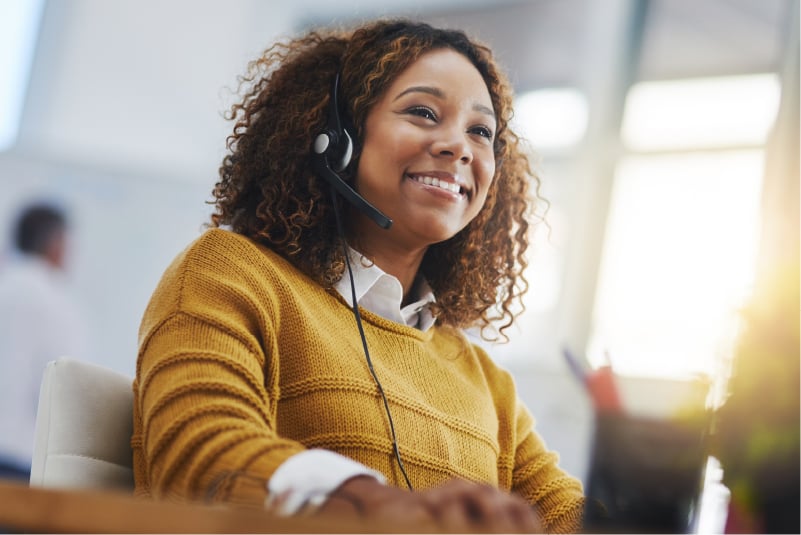Cloud computing has given the world to the world: in theory, anyone can retrieve any data at any time — from anywhere.
Amid such a tightly-knit digital ecosystem, some may assume that system integration is redundant, or even a return-on-investment risk.
But that just isn’t true. System integration is a highly worthwhile project that can not only get a company’s system to run more efficiently, but also generate greater income with less waste.
What are integrated systems? We’ll go over that and more, below.
The definition and purpose of system integration
System integration is the bringing together of individual components or subsystems to form a larger, thoroughly cohesive system. This process involves combining hardware, software, and other elements, such as data and communication protocols, in order to create a seamless digital-physical information environment.
Ideally, an integrated system helps a company streamline its objectives; mechanical, electrical, and software systems can communicate as a homogenous unit, rather than a set of disconnected subsystems subject to slowdown or failure.
Types of system integration
There are several system integration types; which one a company implements depends on the context and specific requirements of the system being integrated. System integration examples include:
- Hardware integration: Combining different hardware components, such as sensors, actuators, and controllers, to create a cohesive and functional system.
- Software integration: Combining different software components, such as applications, libraries, and APIs, to create a cohesive and functional system.
- Data integration: Combining different data sources, such as databases, spreadsheets, and cloud services, to create a unified data architecture.
- Network integration: Combining different communication networks, such as LANs, WANs, and the Internet, to create a cohesive and functional system.
- Business process integration: Combining different business processes, such as marketing, sales, and customer service, to create a cohesive and functional system.
- Enterprise integration: Combining different systems and subsystems across an organization to create a cohesive and functional system.
- System of systems integration: Combining different systems across multiple organizations to create a cohesive and functional system.
While system integration types vary, the purpose of each is to create a unified whole of once-disparate subsystems.
System integration methods
Some common system integration methods include:
- Top-down integration: A method in which the system is broken down into smaller subsystems, and integration begins with the highest-level subsystems and works down to the lowest-level subsystems.
- Bottom-up integration: A method in which the system is built up from the lowest-level components and subsystems, and integration works up to the highest-level subsystems.
- Big-bang integration: A method in which all components and subsystems are integrated at once. This method is typically used when the system is relatively simple and there is a high level of confidence in the system design.
- Incremental integration: A method in which the system is integrated in small, incremental steps, usually with the goal of improving the system over time.
- Iterative integration: A method in which integration is done in iterations, with each iteration building on the previous one. This method allows for testing and validation of the system at each stage of integration.
- Service-oriented architecture (SOA) integration: A method that uses web services, XML, and other open standards to integrate different systems and applications.
Certain projects may require a combination of any number of the above methods. In almost all cases, however, system integration is possible one way or another. Remaining flexible and being open to creative solutions is key to creating the ideal system.
For a great example of integrating tools in action, read our eBook, The Unparalleled Integration: ConnectWise PSA & ConnectWise CPQ.
The system integrator's role
The system integrator oversees and manages a system integration project. The system integrator is responsible for coordinating many aspects of the integration project, including the design, development, testing, and deployment of the system.
The specific tasks and responsibilities of a system integrator may include:
- Defining the system requirements and objectives
- Identifying and selecting the appropriate components and subsystems
- Designing the overall architecture of the system
- Coordinating the work of different teams and stakeholders
- Managing the schedule and budget of the project
- Ensuring the system is tested and validated
- Deploying the system and providing support and maintenance
- Tracking and managing the performance of the system
- Managing the change control process of the system
The system integrator can also help you create a culture of automation. This means regularizing automated processes — making doing so an expected, accepted part of your team’s operation. Doing so focuses your team on efficiency.
Eventually, you can begin to automate your automation — that is, you can automate the update process across your integrated system, making sure you’re always working with the latest versions of all automated tools.
Automation benefits your overall integrated system, and there are many more benefits to integration.
Benefits of system integration
The official website of the Systems Integration Division of the National Institute of Standards and Technology (NIST) says that the major benefit of system integration is “To promote U.S. innovation and industrial competitiveness in areas of critical national priority… in ways that enhance economic prosperity and improve the quality of life.”
In a more general sense, system integration benefits include:
- Improved performance: By integrating different components and subsystems, the system can achieve a higher level of performance, such as increased speed or reduced error rates.
- Increased efficiency: System integration can lead to greater efficiency, such as reduced costs or improved scalability.
- Enhanced functionality: Integrating different components and subsystems can result in the system being able to handle new types of data or support new business processes.
- Improved reliability and maintainability: Coordinating and communicating among different components and subsystems can lead to a more reliable and maintainable system.
- Better decision-making: Integrating data from different systems and subsystems can provide a more complete and accurate picture, allowing for better decision-making.
- Reduced costs: Integrating systems can lead to cost savings by reducing the need for duplicate systems, and by improving the efficiency of existing systems.
- Increased agility: Integrating systems can make the organization more agile and responsive to changes in the market or industry.
- Improved security: By integrating security measures across all systems, the organization is better protected against cyber attacks and data breaches.
- Better customer experience: Integrating systems can improve the customer experience, by providing a more seamless and personalized service.
In short, system integration provides more data, boosts revenue, and improves customer relations.

Challenges in the system integration process
System integration is a highly sophisticated project. While it yields major benefits, it can be challenging to implement. Some common hurdles include:
- Complexity: Integrating different systems and subsystems can be a complex task, especially when the systems have different architectures, technologies, and communication protocols.
- Compatibility: Ensuring that different components and subsystems are compatible and can work together seamlessly can be difficult, and may require significant testing and validation.
- Integration with legacy systems: Integrating new systems with legacy systems can be a struggle, especially when the older systems have limited interoperability or scalability.
- Data integration: Integrating different data, such as databases, spreadsheets, and cloud services, can be difficult, especially when the data is stored in different formats or structures.
- Security: Integrating different systems can increase the risk of security breaches and data loss, and may require additional security measures to be put in place.
- Time and costs: Integrating different systems can take a significant amount of time and resources, and may require additional costs.
- Communication and coordination: Integrating different systems and subsystems often requires coordination and communication among different teams and stakeholders, and may require a significant amount of project management.
- Change management: The system integration process may require changes in the organization's processes, systems, and people, and change management is critical to ensure that the organization can adapt and benefit from the new system.
In order to overcome these challenges, a company needs to plan thoroughly, communicate closely with stakeholders, and implement integration carefully and effectively. A robust change management plan and a flexible approach that can adapt to changing requirements and unforeseen issues can help to mitigate these and other challenges.
How to execute system integration
The system integration process looks different from company to company. Generally speaking, system integration is executed as follows:
- Define the system requirements and objectives: The first step in executing system integration is to clearly define the requirements and objectives of the system. This involves identifying the specific needs and goals of the system, such as performance, functionality, and scalability.
- Identify and select the appropriate components and subsystems: Once the system requirements and objectives are defined, the next step is to identify and select the appropriate components and subsystems that will be used to build the system. This includes identifying the hardware, software, and other elements that will be needed.
- Design the overall architecture of the system: The system architecture is the overall structure of the system, including the layout of the components and subsystems, and how they will interact with each other. This is a crucial step in the system integration process, as it defines how the system will function and perform.
- Coordinate the work of different teams and stakeholders: System integration often involves coordination and communication among different teams and stakeholders. This step involves managing the schedule, budget, and resources of the project.
- Test and validate the system: Once the system is designed and built, the next step is to test and validate the system to ensure that it meets the requirements and objectives defined in the first step.
- Deploy the system and provide support and maintenance: Once the system has been tested and validated, the next step is to deploy the system and provide support and maintenance. This includes ensuring that the system is up and running, and that any issues are addressed in a timely manner.
- Track and manage the performance of the system: The system integration process does not end with the deployment of the system; it's important to track and manage the performance of the system to ensure that it meets the needs and expectations of the end users and stakeholders.
What exactly the system integration process looks like depends on the scope and complexity of the project. Furthermore, any such process needs to be adaptable: certain issues may arise that, with careful planning, won’t necessarily cause downtime.
Ready to start reaping the benefits of system integration? ConnectWise understands the importance of system integration to ensure smooth business operations. We’ve invested in an award-winning PSA and RMM integration and provide the largest marketplace of third-party integrations in the industry. Check out our on-demand demos to find the products that are right for you.















